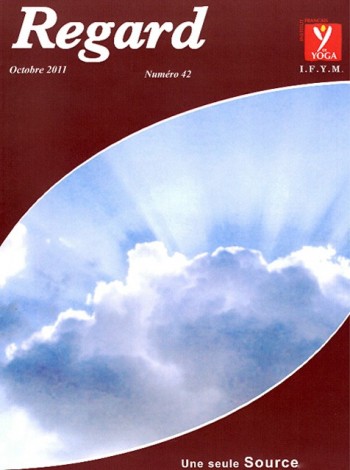The Dvandva
The effects of āsana : transforming our being in the world ?
Āsana, the practice of postures, is the most well known and most taught aspect of yoga.
The Dvandva
The effects of āsana : transforming our being in the world ?
Āsana, the practice of postures, is the most well known and most taught aspect of yoga.
This practice of postures is presented in three sutras in the second chapter, which give the definition (II 46), evoke the necessary approach (II 47) and describe the effects of their practice (II 48).
In my opinion, the impact of this last sutra is often under-estimated. What does the text say ?
YS II 48 : tatah dvandva-anabhighâtah, which can be translated as
Thereafter, (there is an) absence of disturbance (due to the) pairs of opposites.
tatah an-abhi-ghâta dvandva
Here, Patanjali brings up the pairs of opposites « dvanda », central to our understanding of this sutra.
Yoga practice and the pairs of opposites
The pairs of opposites are often used in the sense of “forces or conditions to which the body is subjected : top and bottom, left and right, front and back, hot and cold, rest and activity, etc…” The pairs of opposites are thus often seen as conditions of life to which we must adapt. If this were the case, āsana practice would increase our adaptability to these opposing forces coming from our constitution or from our environment.
And yes, it is true, the practice of āsana undeniably does enable greater adaptability ! But is this not a little limited ? Is it not possible to take a broader view, to see the context within which this notion of dvandva is introduced, to see the interior dimension alluded to by the word dvandva ?
The transformation
What is the context ? Âsana is the fourth of the eight limbs of yoga (anga), a system of practice for developing our discernement (viveka), and reducing the states of confusion (samyoga) which prevent fulfilment of the life within us. The aim of āsana is no other than the transformation of our bodymind; the deep transformation of our being in the world in service to our freedom and depth of understanding.
The interior couple
How should we read the word dvandva ? Twice within the word, we find dvi, which means “two”. Dvandva, or dvi-dvi, means « two-two» or rather a « second two » more exterior pair, pointing to a first, more interior, pair : the couple purusa and prakrti.
The entire text of the Yoga Sutra deals with the relationship between these two. Purusa, the Life inside of us which is not subject to change and which is reflected into the world through our body and our mind; and Prakrti, that which is lived, is contingent and is subject to change.
In confusing these two, in mistaking one for the other, in confusing the form that life takes within us for Life itself, we find ourselves in a state of confusion (samyoga). In such a state the space available for purusa to be reflected is decreased.
The Yoga Sutra invites us to know and to live the difference between the two.
The breath and the body
The breath is the expression of the interaction between purusa and prakrti within the body. The breath shows us whether or not, in our being in the world, there is the space and adequate support for Prâna, the reflection of purusa.
The practice of āsana invites us to explore and to undo the confusion between breath and body, to open a space for Prâna to move freely. Āsana serves our incarnation, so that our body may become truly alive and an expression of Life itself.
The lesson of life
Thus the dvandva are not pairs of opposites that are imposed upon us from the outside ; the dvandva are produced within us, precisely as a result of our incapacity to experience the difference between Purusa and Prakrti, this primary “pair”.
It is as Life were saying to us “you who do not wish to live these two (purusa/prakrti), are therefore going to discover other twos, the dvi-dvi (dvandva), and learn!”
Beyond the two
Āsana is profoundly a place of transformation, a place where we may discover and accept our humanity and yield to the Life within us that is beyond our understanding.
In accepting that we do not control Life, in accepting to live the “two”, we have access to that which is ONE, beyond the two.
Peter Hersnack, September 2011
- Title: The Dvandva
- Authors: Peter Hersnack
- Publisher: IFYM
- Source: Revue Regard #42
- Published: 2011
Date : 02 August 2017
 English
English  Français
Français 

